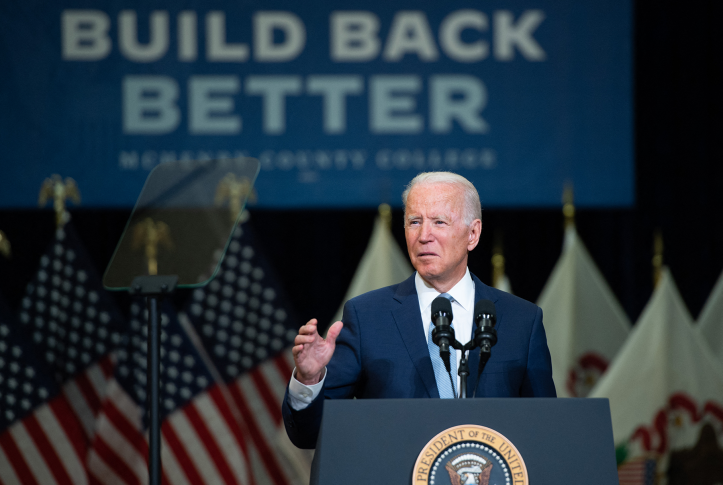In November 2021, the House of Representatives passed President Biden’s Build Back Better Act (BBBA). After updates by several Senate committees, the legislation is currently stalled in the Senate where its prospects are uncertain. This is unfortunate, as the BBBA would significantly improve health care coverage for Americans. Indeed, failure to adopt it will lead to hundreds of thousands of Americans losing their coverage or paying more for health benefits.
Among other adjustments, the BBBA would significantly improve Medicaid coverage and provide Medicare hearing care coverage for the first time. It also would reduce drug prices and cost sharing. Perhaps most importantly, the BBBA would address social determinants of health like housing, maternal and childhood nutrition, and childcare, and begin to focus on the greatest threat to America’s future health — climate change. This post looks at the provisions of the BBBA that improve Affordable Care Act (ACA) coverage in the marketplaces by subsidizing premiums and reducing cost sharing.
Making Insurance Premiums More Affordable
The BBBA would extend three enhancements to the premium tax credits created by the American Rescue Plan Act (ARPA) in 2021.These provisions would:
- ensure through 2025 that no one has to spend more than 8.5 percent of household income on premiums; previously, eligibility for premium tax credits was capped at 400 percent of the federal poverty level (i.e., $106,000 for a family of four)
- increase premium subsidies through 2025 for people with incomes between 100 percent and 400 percent of the federal poverty level; that is, between $26,500 and $106,000 for a family of four; people with incomes between 100 percent and 150 percent of the poverty level ($39,750 for a family of four) would receive basic silver coverage (in which the insurance company covers an average of 70 percent of claims costs) for free through 2025
- permit people who receive unemployment compensation to get marketplace premium subsidies through 2022.
As of early January 2022, 14.2 million Americans have signed up for 2023 marketplace coverage under the ARPA’s expanded eligibility provisions, over a million more than the previous record for sign-ups at the beginning of the year. During the 2021 special-enrollment period to address COVID-19, nearly half of new enrollees had a monthly premium of $10 or less; the median deductible was $50. If the BBBA is not passed, the ARPA financial eligibility expansion provisions expire at the end of 2022. The unemployment coverage provision expired at the end of 2021. About 400,000 individuals who gained coverage under the ARPA would lose subsidized coverage and could become uninsured. Millions more could see significant increases in their premium costs.
Closing the Medicaid Gap
As adopted in 2010, the ACA provided premium tax credits to help people with incomes above 100 percent of the federal poverty level to purchase private health insurance through the marketplace. Those with incomes below 138 percent were supposed to be covered through Medicaid. In 2012, the Supreme Court held that states could not be compelled to expand Medicaid. Eventually 38 states expanded Medicaid, but 12 states have opted out, despite significant financial incentives. About 2.2 million uninsured individuals with incomes below 100 percent of poverty in these 12 states remain in this Medicaid coverage gap.
The BBBA would grant premium tax credit subsidies through 2025 to people with incomes below 138 percent of the poverty level ($36,570 for a family of four) who are not otherwise eligible for Medicaid. The coverage would be sold by private insurance companies but would look more like Medicaid coverage than marketplace coverage. Enrollment would be continuously available and not limited to specific enrollment periods. Eligible plans would cover 99 percent of total allowed cost of benefits starting in 2023. This coverage would pay for nonemergency medical transportation and family planning services, which marketplace plans are not required to cover. It also would, for 2025, cover otherwise uncovered medical expenses for three months prior to application. Recipients would not be required to file taxes or pay back excess premium tax credits. Tax credits would be available even if employment coverage were offered to employees and their families, and employers would not face penalties if employees selected this form of coverage.
Addressing Affordability in Employer and Individual Market Coverage
The BBBA would offer several other enhancements to existing coverage. First, it would make people who have access to employer coverage that costs more than 8.5 percent of household income eligible for premium tax credits. (The current threshold for “affordable employer premiums” is 9.6 percent.). This would allow more people struggling to afford employer coverage to qualify for marketplace subsidies. The BBBA also would eliminate the current requirement to index this threshold rate for inflation, although it would increase to 9.5 percent after 2025. The BBBA would eliminate the current requirement that lump sum Social Security payments be treated as income and exclude some income of dependents that would otherwise be counted as household income for determining premium tax credit eligibility. It would limit to $300 the amount that people who receive more premium tax credits than they are entitled to would have to pay back as long as their household incomes are below 200 percent of the poverty level. For 2023, 2024, and 2025, the BBBA would provide $10 billion per year to fund state individual market reinsurance initiatives or programs to reduce premiums and cost sharing for individual market coverage. Finally, it would provide $100 million for consumer assistance programs for 2022 through 2025.
In sum, the BBBA would significantly expand coverage to the uninsured and reduce the cost of coverage for low- and moderate-income Americans.




